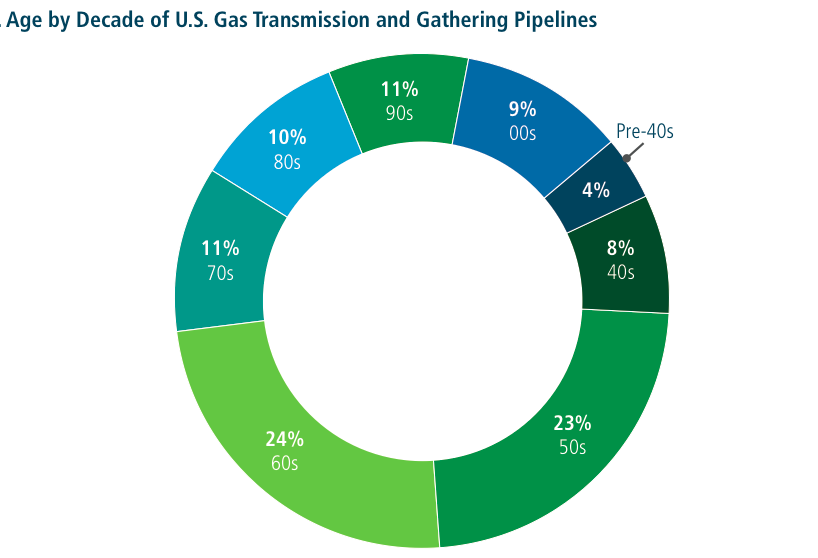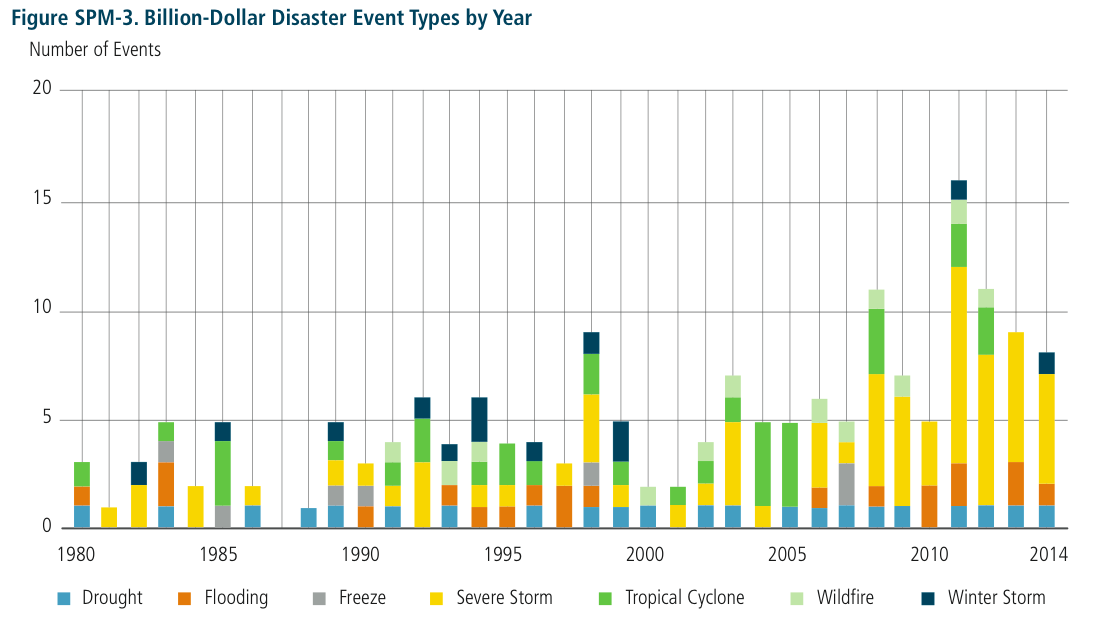The U.S. is more energy independent than it has been in four decades and is witnessing a boom in cheaper clean energy sources, particularly wind and solar. However, the infrastructure used to transport both electric power and fossil fuels is a weak link that presents serious challenges for the country.
Those are the conclusions of the federal government’s first Quadrennial Energy Review, a report President Obama directed the Department of Energy to prepare. It was released today.
Related: $478B Infrastructure Bill Blocked by Senate GOP
The report cites a laundry list of current and future threats to the stability of the system, much of it related to aging infrastructure, or infrastructure that was simply not designed to counter the threats now facing it. For instance, 59 percent of the pipeline systems that transport natural gas were constructed in the 1960s or earlier.

The report calls on the federal government to “address the growing vulnerabilities posed by climate change, the evolving energy mix, cyber and physical threats, growing interdependencies, aging infrastructure and workforce needs.”
The country’s transportation, storage and distribution (TS&D) system “is increasingly vulnerable to extreme weather events like hurricanes, flooding and wildfires. Changes in the geography of domestic energy production stress the ability of existing infrastructures to move both liquid fuels and electricity from supply regions to demand centers. Congestion in the nation’s ports, waterways and rail systems affect the timing and cost of moving not just energy products, but all commodities.”

The upside of the challenges facing the TS&D system is that addressing them will necessarily create a lot of jobs – up to 1.5 million of them, according to the report. The downside is that it won’t be cheap.
Related: Get Ready to Pay More Tolls if Infrastructure Isn’t Funded
The Department of Energy estimates that a program designed to improve maintenance of natural gas pipelines would run $2.5 billion to $3.5 billion over 10 years. A plan to promote innovative responses to threats to the stability of the electric grid would cost $3 billion to $5 billion. A comprehensive electrical grid modernization program would be an additional $3.5 billion.
Groups representing both longtime figures in the energy debates, as well as newcomers, applauded many of the report’s recommendations. The WIRES Group, which represents electric power transmission companies, took to Twitter to cheer the call for increased infrastructure investment:
#QuadrennialEnergyReview from @Energy confirms what WIRES has said all along. America must invest in transmission infrastructure now!
— WIRES Group (@wiresgroup) April 21, 2015
Similarly, the American Wind Energy Group also hailed the call for increased electric grid capacity:
A new report from @ENERGY highlights benefits of transmission & grid operating reforms http://t.co/a7qFlKVRbP pic.twitter.com/ahyR6ejHy1
— American Wind Energy (@AWEA) April 21, 2015
Unfortunately, experts and advocates have been urging lawmakers to invest in upgrading the U.S. infrastructure for the better part of a decade to little or no avail. Whether another report added to the pile of existing testimony about the need for a serious infrastructure plan will make a difference is far from certain.
Top Reads from The Fiscal Times:




